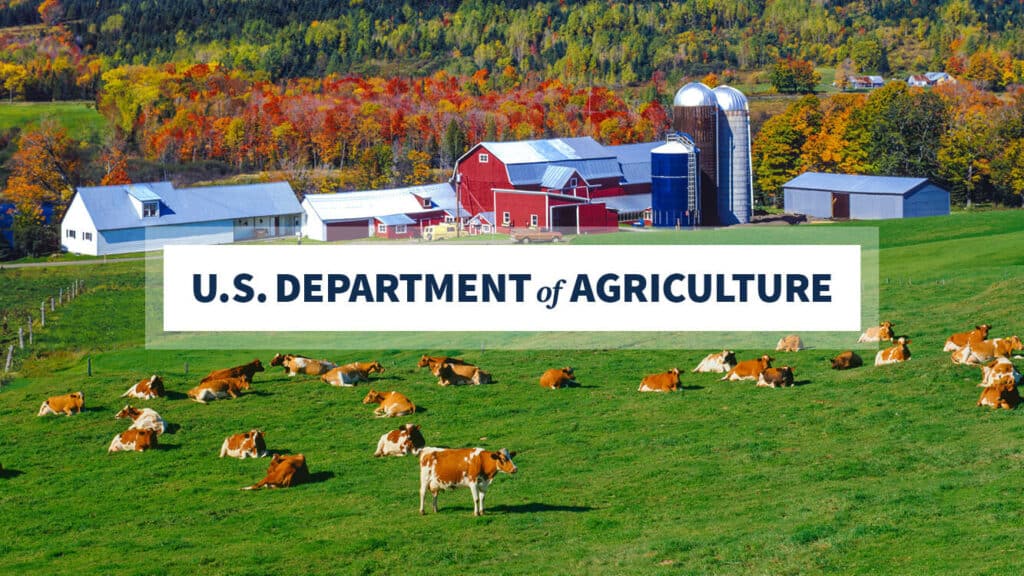USDA
Claim This Profile
Is this your business?
Claim your company profile on iGrow News to showcase your business, share updates, and connect with the global AgTech community. Enjoy features like customizable profiles, press release submissions, event promotions, and job postings, with premium plans offering enhanced visibility. Take control of your presence and reach key industry decision-makers today!
Claim Now!Company Profile
Overview of the USDA
The United States Department of Agriculture (USDA) is a key federal agency responsible for overseeing farming, forestry, rural economic development, food safety, and nutrition programs. Its mission is to support farmers, ensure food security, protect natural resources, and foster vibrant rural communities. Established in the 19th century, the USDA has grown into a multifaceted institution central to national food policy and agricultural regulation.
History and Founding of the USDA
- Establishment: The USDA was created on May 15, 1862, by President Abraham Lincoln, who referred to it as the “People's Department” due to the agrarian nature of the American population at the time.
- First Commissioner: Isaac Newton was appointed the first Commissioner of Agriculture. He led a small team focused on agricultural research, seed distribution, and statistical data collection.
- Elevation to Cabinet Status: In 1889, the USDA was elevated to cabinet-level status, reflecting the increasing importance of agriculture in national policy.
- Evolving Mandate: Over the years, the USDA’s role expanded beyond agriculture to encompass food safety, nutrition programs, environmental stewardship, and rural infrastructure development.
Key Programs and Responsibilities
- Land-Grant Institutions: The Morrill Act of 1862 allocated federal land to states to establish colleges focused on agriculture and the mechanical arts, laying the foundation for agricultural education and research.
- Agricultural Research and Extension: The Hatch Act (1887) and Smith-Lever Act (1914) funded research stations and extension services, bringing agricultural innovation to local communities.
- Food Safety: The USDA oversees the inspection and safety of meat, poultry, and certain egg products through its Food Safety and Inspection Service (FSIS).
- Nutrition Assistance Programs: The USDA manages key programs to combat hunger and support public health, including:
- Supplemental Nutrition Assistance Program (SNAP)
- Special Supplemental Nutrition Program for Women, Infants, and Children (WIC)
- National School Lunch Program
- Rural Development: The USDA provides funding and technical assistance for housing, utilities, broadband, and economic development projects in rural communities.
- Conservation and Climate Initiatives: The department supports sustainable agriculture through soil conservation, water management, wildlife protection, and climate-smart farming practices.
- Support for Family Farms: The USDA offers grants, loans, and insurance programs designed to assist small and mid-sized farmers in accessing markets and improving resilience.
Recent Milestones and Initiatives
In 2023, the USDA highlighted several key accomplishments:
- Farmer Relief Measures: Distributed over $1.7 billion in immediate financial support to struggling farmers and streamlined access to loan programs.
- Broadband Expansion: Invested more than $1.8 billion in rural broadband projects, connecting over 250,000 residents to high-speed internet.
- Environmental Stewardship: Facilitated record enrollment in conservation programs and expanded support for clean energy projects in rural areas.
- Enhanced Nutrition Access: Broadened participation in school meal programs and improved access to healthy food for underserved populations.
Challenges and Criticism
Despite its extensive contributions, the USDA has faced notable controversies:
- Historical Discrimination: For decades, Black farmers faced systemic discrimination in USDA lending and aid programs. The 1999 Pigford v. Glickman settlement awarded over $2 billion in damages, yet issues of equity and access persist.
- Food Aid Delivery Failures: Instances of delayed and poorly managed food assistance, especially in Native American communities, have led to shortages and public criticism.
- Disease Response Concerns: The agency was criticized for its slow response to disease outbreaks, including H5N1 avian flu and listeria, raising concerns about food safety oversight.
- Labor Conditions: Investigations have highlighted unsafe conditions in meat and poultry processing plants, with little enforcement from the USDA to address worker protections.
- Program Cuts: The discontinuation of the Local Food for Schools program in 2025 drew criticism for undermining local food systems and school nutrition efforts.
At-a-Glance Summary of the USDA
| Category | Details |
|---|---|
| Established | 1862, by President Abraham Lincoln |
| Primary Mission | Agriculture, food safety, nutrition, rural development, conservation |
| Major Programs | SNAP, WIC, School Meals, Rural Development, Farm Loans, Conservation |
| Signature Initiatives | Land-Grant Colleges, Extension Services, Broadband Expansion, Food Safety Regulation |
| Recent Accomplishments | Financial relief for farmers, broadband expansion, conservation funding, expanded nutrition access |
| Key Controversies | Racial discrimination, food aid mismanagement, disease response delays, worker safety issues, program terminations |
Conclusion
The USDA remains a cornerstone of American public policy, balancing its historic mission of supporting agriculture with modern imperatives like environmental sustainability, equitable food systems, and rural development. While the department has achieved measurable success across its diverse programs, it continues to face scrutiny regarding transparency, inclusiveness, and operational efficiency.
Read the latest news on the organization here.
Gallery Pictures
Job Openings
- Website: https://www.usda.gov/

